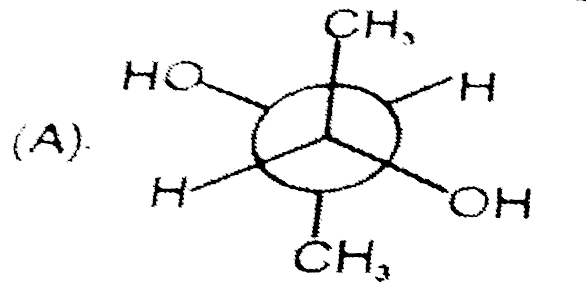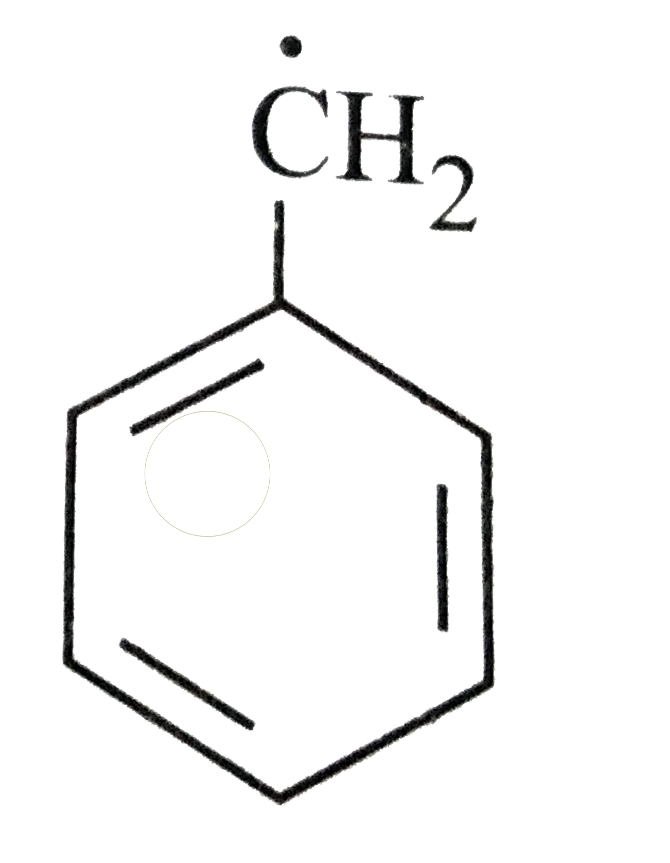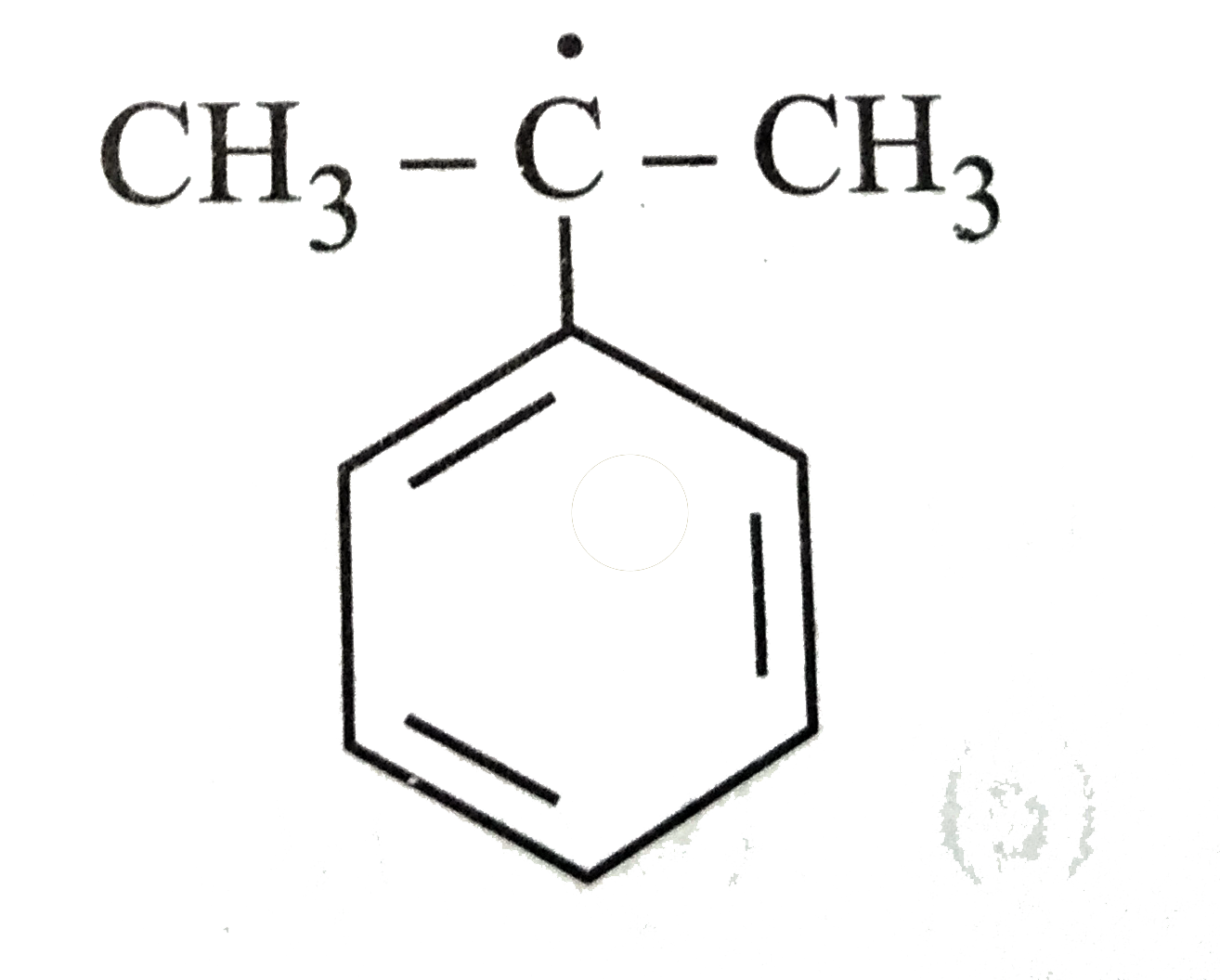Which is the most stable conformer among the following ?




To determine the most stable conformer among the given options, we need to analyze the conformations based on their spatial arrangements and the resulting steric and torsional strains. Here’s a step-by-step solution:
Step 1: Identify the Conformers
We are provided with four different conformers represented in the Sawhorse projection. We need to analyze each conformer to understand their arrangements.
Step 2: Analyze Conformer A
In Conformer A, both bulky groups (CH3) and the hydroxyl groups (OH) are positioned in an anti configuration. This arrangement minimizes steric hindrance and torsional strain, making it a relatively stable conformer.
Hint: Look for bulky groups positioned opposite to each other to minimize strain.
Step 3: Analyze Conformer B
In Conformer B, both CH3 groups and OH groups are placed in an eclipsed configuration. This arrangement leads to increased steric hindrance and torsional strain, making it less stable compared to Conformer A.
Hint: Eclipsed conformations generally have higher torsional strain due to overlapping electron clouds.
Step 4: Analyze Conformer C
In Conformer C, the CH3 groups are in an anti position, while the OH groups are adjacent. However, the proximity of the OH groups allows for hydrogen bonding, which can stabilize the structure despite the torsional strain present due to the adjacent OH groups.
Hint: Look for hydrogen bonding interactions, as they can significantly enhance stability.
Step 5: Analyze Conformer D
Conformer D also has the CH3 groups in an eclipsed configuration, similar to Conformer B. This arrangement results in high torsional strain, making it less stable.
Hint: Eclipsed conformers with bulky groups are typically the least stable due to steric clashes.
Step 6: Compare Stability
Based on the analysis:
- Conformer A (anti) has low torsional strain.
- Conformer B (eclipsed) has high torsional strain.
- Conformer C (anti with hydrogen bonding) has reduced torsional strain due to hydrogen bonding.
- Conformer D (eclipsed) has high torsional strain.
Conformer C is the most stable due to the presence of hydrogen bonding, which compensates for the torsional strain.
Conclusion
The most stable conformer among the given options is Conformer C due to the presence of hydrogen bonding that reduces the overall strain.
---
We are provided with four different conformers represented in the Sawhorse projection. We need to analyze each conformer to understand their arrangements.
In Conformer A, both bulky groups (CH3) and the hydroxyl groups (OH) are positioned in an anti configuration. This arrangement minimizes steric hindrance and torsional strain, making it a relatively stable conformer.
In Conformer B, both CH3 groups and OH groups are placed in an eclipsed configuration. This arrangement leads to increased steric hindrance and torsional strain, making it less stable compared to Conformer A.
In Conformer C, the CH3 groups are in an anti position, while the OH groups are adjacent. However, the proximity of the OH groups allows for hydrogen bonding, which can stabilize the structure despite the torsional strain present due to the adjacent OH groups.
Conformer D also has the CH3 groups in an eclipsed configuration, similar to Conformer B. This arrangement results in high torsional strain, making it less stable.
Based on the analysis:
- Conformer A (anti) has low torsional strain.
- Conformer B (eclipsed) has high torsional strain.
- Conformer C (anti with hydrogen bonding) has reduced torsional strain due to hydrogen bonding.
- Conformer D (eclipsed) has high torsional strain.
The most stable conformer among the given options is Conformer C due to the presence of hydrogen bonding that reduces the overall strain.
Topper's Solved these Questions
- BOOK - RESONANCE ENGLISHCHAPTER - STEREOISOMERISMEXERCISE - EXERCISE (PART 1 SECTION (A))5videos
STEREOISOMERISM
- BOOK - RESONANCE ENGLISHCHAPTER - STEREOISOMERISMEXERCISE - EXERCISE (PART 1 SECTION (B))2videos
STEREOISOMERISM
- BOOK - RESONANCE ENGLISHCHAPTER - SOLUTIONSEXERCISE - Advabced Level Problems (PART-2)35videos
SOLUTIONS
- BOOK - RESONANCE ENGLISHCHAPTER - STRUCTURAL IDENTIFICATIONEXERCISE - Advanced level Problems (Part-III)12videos
STRUCTURAL IDENTIFICATION
Similar Questions
Knowledge Check
- Question 1 - Select One
The most stable free radical among the following is
A B
B C
C D
D
The most stable carbanion among the following is
View SolutionMost stable carbanion among the following is
View SolutionThe most stable radical among the following is
View SolutionThe most stable radical among the following is :
View SolutionMost stable radical among the following is
View SolutionThe most stable complex among following is
View SolutionMost stable radical among the following is :
View Solution
